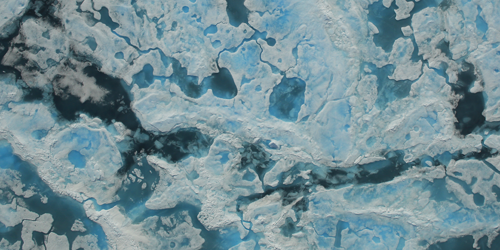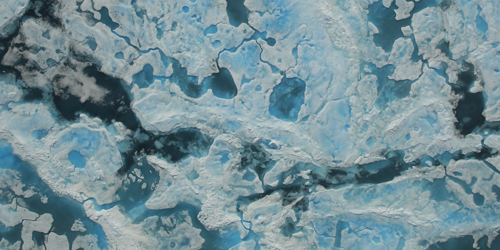The Geometry of Arctic Ponds
Climate change has dramatically altered the Arctic, with sea ice melting faster than large-scale models predicted. Part of the reason for this underestimation is the lack of a full understanding of the ponds that develop from the melting ice. A new geometric model of Arctic ponds can reproduce observed distributions of pond size and shape. Because of its simplicity, the model may prove to be practical in predicting how further warming could affect polar ice caps.
When Arctic sea ice melts, meltwater ponds of various shapes and sizes form on the ice surface. The ponds have a dramatic impact on energy transport, as water is less reflective and more absorbing of solar flux than either ice or snow. This property leads to a positive feedback mechanism: the more ponds form, the more sunlight is absorbed, and the more melting occurs. Researchers are currently trying to formulate pond models that might allow them to incorporate these small-scale feedback effects into large-scale climate models.
Predrag Popović from the University of Chicago and his colleagues have devised a simple pond model that is based on drawing circles randomly on a plane and assuming that melt ponds form in the voids between the circles. The model has just two input parameters: the mean circle radius and the fraction of surface area covered by voids. The team tuned these parameters so that the voids exhibit the same spatial correlations as those observed in melt ponds. Using this parameterization, they showed that the model accurately reproduces other pond features, such as the fractal characterization of their shapes and the pond abundance as a function of area.
This research is published in Physical Review Letters.
–Michael Schirber
Michael Schirber is a Corresponding Editor for Physics based in Lyon, France.





